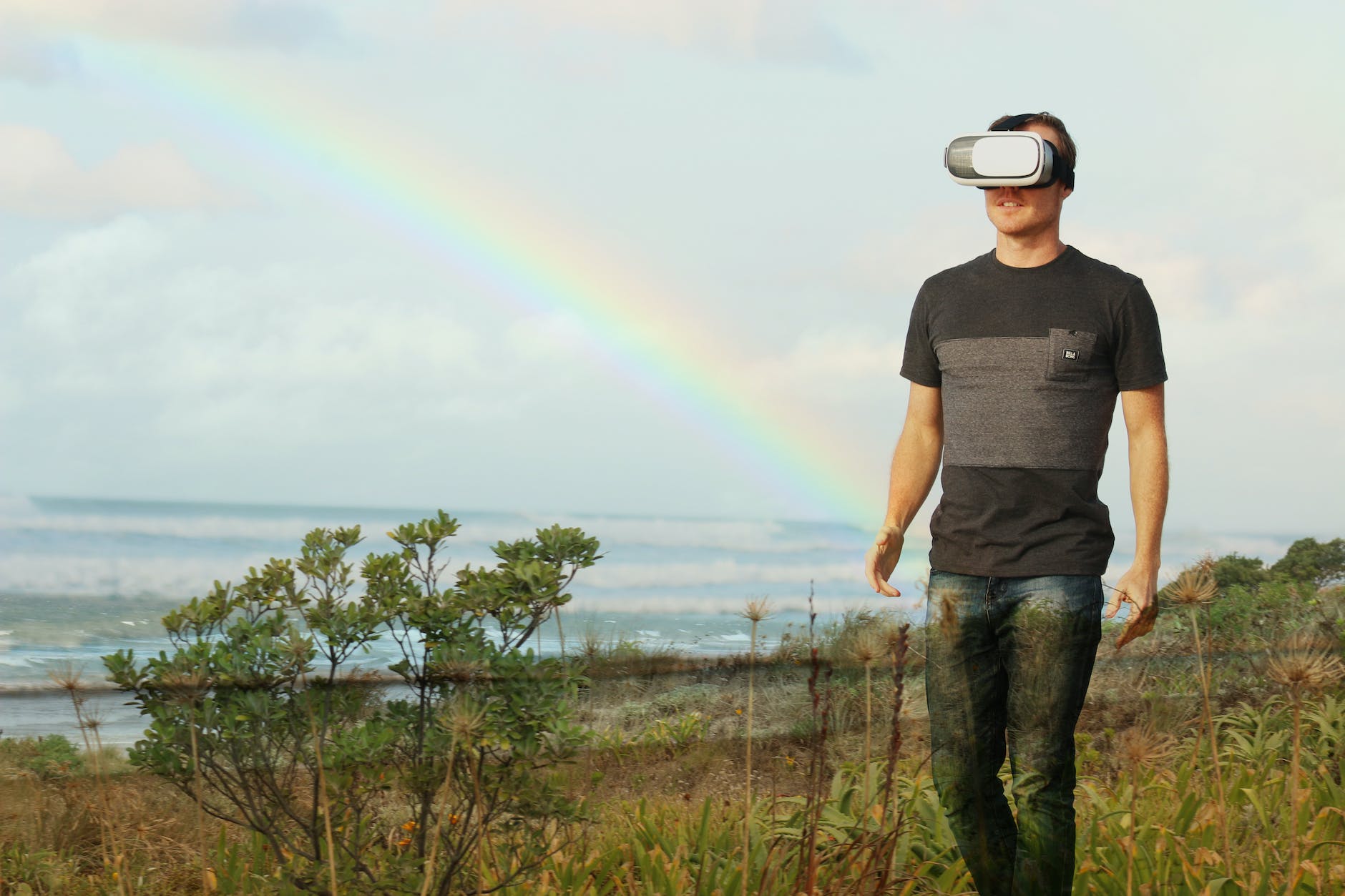
VR
Before now, upon hearing about Virtual Reality(VR), the first thing that rings in our mind or comes to mind is gaming or, let’s say, something related to entertainment.
But now, VR now gone beyond that assumed level as VR is a notable and powerful tool in the hands of many big organizations or sectors. VR now transforms and serves as a link that connects theory to reality.
Firefighter, astronaut, surgeon, teachers, and many more now uses VR as a means of training. VR comes with many benefits, for instance, it is cost-effective, safe and real, and many more. Today, what we will be dealing with is the impact of VR on skill mastery.
Understanding What VR Training Is
We want to believe that word training is not strange to you, so we will explain what VR is in a descriptive way. See VR as a kind of headset, just not the ordinary headset we are used with.
It’s a kind of VR headset that covers your eyes like goggles and ears totally, and after putting it on, it instantly transforms you from the physical realm into another world created by a computer. Mind you, the world we are talking about is exactly like the real world; nothing changes.
More on the VR, these goggles have screens inside them that display 3D images, and they also have built-in speakers to create realistic sounds.
Also, as you turn your head around, simultaneously, the VR tracks your change in head movement and adjusts what you are seeing and hear in the same way. What we are saying in essence, is that, you can look up, down, left, right, and even behind you, just like in the real world.
Know that VR does not stop there; that is, it is not just about sight and sound. Some VR allows additional controllers, such as gloves and hand controllers, which gives you more room to relate to your new real world. You can grab stuff you are seeing, reach out to places, and manipulate things you are seeing in front of you.
The Power of Immersive Learning
Immersive learning is the cornerstone of VR training. In the past years, we have majorly relied on textbooks, lectures, and PowerPoint presentations(PPP) as the only way of imparting skills and knowledge.
Yes, these so-called methods have helped us in many ways, but we cannot close our eyes to the areas in which there are lapses. With VR, we are open to a 360-immersive experience.
Learners are transported into realistic virtual environments where they can interact, practice, and make mistakes without real-world consequences. Learners become active participants in the learning process when they are fully engaged in a virtual world. One additional thing about using VR for learners is that learners are open to putting all their senses to use, which now automatically increases their assimilation, understanding, and memory.
Learners are open to be deeper and swallowed up in learning, especially in a virtual environment, which makes them to be more active and participate in the learning process. They put in their senses, which in return enhances retention and understanding. As proof, a study found out that people tend to remember information better when it’s presented in an immersive and interactive manner.
Safe and Realistic Practice
Healthcare, aviation, and other industries that use heavy machinery deserve an environment that is safe, as any mistake like this can come with devastating outcomes.
Traditional training methods often fall short of providing a risk-free practice space. The birth of VR training system like Pixaera shed light on that part and changed the game by bringing a look-a-like of real-world scenarios that allow learners to commit mistakes without the fear of sustaining injury or causing harm to themselves or to the people around them.
More on that, medical students do engage in surgical procedures in which they are to perform real surgery on patients; of course, any mistake can be disastrous and could lead to a loss of lives.
However, in VR allowed environment, such a thing can never happen as students can conveniently work on their skills repeatedly without risking anybody’s life as they will be performing the surgery with VR, which makes no difference from a real live performance.
Similarly, pilots in training can practice things related to their work, such as emergency landings and the like, in a virtual way, gaining solid experience before jumping into a real aircraft. All this is safe and real practice, which not only boosts confidence but also accelerates the learning process.
Personalized Learning
VR training caters to individual learning styles and preferences. It allows learners to progress at their own pace, pausing, rewinding, or repeating scenarios as needed.
We know, in our used-to traditional classroom ways, nothing of the stuffs we mentioned above is available or even possible, as everyone can only learn at the same pace and if perherp a student couldn’t catch up, such will be left behind.
Moreover, VR training can adapt to the learner’s skill level. If a learner is struggling with a particular aspect of a skill, the VR program can provide additional support or challenges accordingly. This adaptability ensures that each learner attains their full potential and achieves true skill mastery.
Overcoming Physical Barriers
Some skills require physical practice before it will become part of the person. For instance, mastering the techniques of a musical instrument or fine-tuning athletic skills often necessitates repetitive physical actions.
VR training presents a finite solution to these hindrances with the way it allows learners to practice and refine their physical skills in a VR environment. Imagine a budding pianist using VR to practice complex piano pieces.
They can simulate playing on a grand piano and receive real-time feedback on their finger placement, timing, and expression. Also, there are rooms for athletes in VR world as they can improve their performance by practicing their moves in a VR sports simulation.
Enhanced Engagement and Motivation
One of the things common with the traditional way of training is that it can be boring as a result of spending hours on sit. The lecturers keep talking and explaining all alone while the learners listen.
The effects of this on the learners is that they will lose motivation and interest, leading to low retention. VR possesses the ability to grab learners’ total attention, this is because it is interactive and excites the learners.
Learners are more likely to invest time and effort in skill acquisition when they find the process enjoyable and rewarding.
Data-Driven Feedback
You can also generate important data after every VR training; this means it just doesn’t provide room for practice or training. Therefore, every action a learner takes in the virtual environment can be tracked and analyzed.
With the gathered data, instructors can easily work on it as a means of reforming and assessment.
Learners and the instructors involved can check and review performance metrics, pick out areas that demand adjustment or improvement, and set specific goals for skill mastery.
So, whether it’s a surgeon analyzing their surgical technique or a chef perfecting a cooking skill, VR training provides the necessary data to facilitate continuous improvement.
Parting Words
The way we learn and master abilities is being completely transformed by VR training. Traditional training approaches are changing as a result of their immersive nature, secure practice environment, personalized approach, and data-driven feedback.
Without having second thoughts, the future of VR training has even more promise as technology develops, closing the gap between theory and experience like never before.





